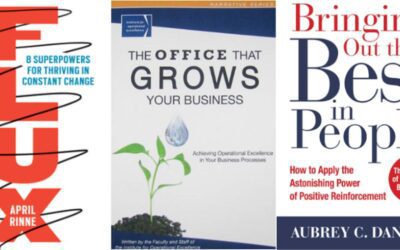Labor shortage? Workforce crisis? Call it what you will —manufacturers like you are struggling to find and retain workers.
Since the beginning of the pandemic, older workers have left the workforce, workers’ priorities have changed, and younger workers are feeling more overall stress and work-related burnout than older generations. All this leads to job-hopping and workers continuing to search for the right opportunity.
Add to that mix trouble finding accessible child and elder care, difficult access to health care, and lack of viable transportation as a few additional reasons people are staying out of the full-time workforce. These factors are compounded by declining birth rates which translates into fewer workers entering the workforce in the first place.
The result is that we are facing a paradigm shift in the way we approach workforce challenges, and how – and if – your business thrives for the foreseeable future.
Six Things You Can Do Today
The good news is that there are steps you can take now, which are centered around how you attract, retain and provide opportunities for future employees.
- Make changes to recruitment efforts to attract workers.
- Enhance onboarding practices and provide learning and growth opportunities to improve retention.
- Develop a culture of respect and inclusivity to create a positive work environment.
- Provide schedule flexibility and/or hybrid work schedules, where possible, to reduce burnout and stress.
- Transition to digitization and automation to increase effectiveness and productivity.
- Tap into under-represented and over-looked populations to expand the talent pool.
But this is just a starting point. According to a study by Deloitte and The Manufacturing Institute1, the U.S. could have 2.1 million unfilled jobs by 2030. Workplace culture and flexible schedules alone will not solve these challenges.
How Germany has Created a Robust Labor Workforce
The solution is to invest in developing the next generation of skilled talent through training opportunities. Recently, OMEP consultant Tami Trout participated in the Stronger Together Manufacturing Workforce Mission to learn about Germany’s Dual VET (Vocational Education and Training) apprenticeship system.
What she learned was that in Germany, prior to starting fifth grade, most students and families (with assistance from teachers) choose the type of educational track they will pursue. Those who select the vocational track begin a Dual VET program around tenth or eleventh grade.
With Dual VET students spend 70% of their time training within a company and 30% learning in general studies at a vocational school – and students receive a salary for work performed during this time. Basically, they’re paid to learn.
Employers, schools, social partners, and the government work together to create workers with transferable skills. While we can’t imagine deciding upon a career track at such an early age, in Germany people can’t imagine not making that decision and investment early in life.
How the U.S. is Preparing Workers for Manufacturing
Good work is being done in the U.S., and in the Northwest region in particular, preparing the next generation of workers to enter the manufacturing labor force. While the U.S. model isn’t as structured as the German model for developing specific industrial talent pools, many of the elements do exist. However, they often look different and are outgrowths of specific public programs.
High School Career Technical Education programs around the region teach many of the technical and critical thinking skills that manufacturers ask for.
In Oregon, the Bureau of Labor and Industry has resources dedicated to developing registered apprenticeships at manufacturing companies.
The Association for Career and Technical Education is a trade group representing Career and Technical Educators (CTE). It’s a good starting point for those hoping to understand the landscape of CTE in our region.
OMEP Can Help Your Organization Become Part of the Solution
Addressing the manufacturing workforce challenge is a high priority for NIST, MEP and OMEP. Together, we are participating in the Stronger Together Manufacturing Workforce Mission and strategic initiatives across the nation, taking action to build a bigger and stronger manufacturing workforce.
There are many great examples, nationally and locally, of apprenticeship programs and collaborative efforts expanding dual learning approaches.
We encourage all manufacturers to:
- Learn about the dual learning approach. Identify components that can benefit them, their workers, and the manufacturing ecosystem.
- Align company values with learning and development.
- Dedicate people, resources, space, and equipment to developing a workforce.
- Identify and utilize partnerships (like OMEP) to leverage resources rather than developing them on their own.
- Explore models that encourage practical learning synergies between companies and students (such as internships).
- Research existing apprenticeship programs. Engage with educational, social and government partners that support them. Search out places to participate and influence.
We invite all Oregon manufacturers to learn more about OMEP and how we support Oregon manufacturers. Let’s work together to solve both short term and long term workforce challenges.
Get your no-cost, no obligation custom assessment started today*.
*Valued at up to $10,000



